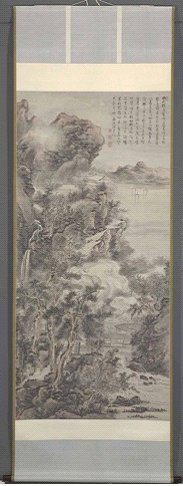陈蕴化的“冬晨”
我最喜欢陈蕴化的画“冬晨”。陈蕴化是一个岭南画派的画家。岭南画派跟传统中国画有什么不一样?岭南画派是1892年开始的、是比较新的中国画。有点儿像欧洲画和日本画。岭南画派有很多自由、可以用很多颜色、不很传统。在陈蕴化的网站、他说他画他的感情、不考虑昨天的规定。我选了这幅画、因为颜色给我留下了很深的印象。 我觉得这幅画很像一个梦幻、看得不清楚、风景太漂亮。
“冬晨”有山雪、和八只鹤。鹤从画的左边飞到画的右边。画利用冬天的颜色、比如说、蓝色、绿色、紫色、白色、和黑色。看起来天气不好、很冷、下雪。一个人都没有、只有自然的风景。
如果我在画里、我要成为一只鹤。虽然我很怕高的地方、我只要飞、因为我很有自由。我一定很冷、所以我跟我的朋友从北边飞到南边。
I really like James Tan’s (Chen Yunhua’s) painting called “Winter morning.” James Tan is a Lingnan School artist. What is the difference between the Lingnan School and traditional Chinese artwork? The Lingnan School started in 1892, so it is more recent. It’s a little like Western and Japanese art. The Lingnan School has more freedom, they can use many colors, non-traditional subjects etc. On James Tan’s website, he says that he paints his feelings and doesn’t pay attention to yesterday’s rules. I picked this painting because the colors left a deep impression on me. I think that this painting resembles a dream, you can’t see it clearly, and the scenery is too beautiful.
“Winter morning” has mountains, snow and 8 cranes. The cranes are flying from the left side of the painting to the right side. The painting uses winter colors, for example, blue, green, white and black. It seems like the weather is bad, it’s very cold and it’s snowing. There are no people, only natural scenery.
If I were in the painting, I would be a crane. Although I am scared of heights, I still want to fly, because I would be very free. I would certainly be cold, so I would fly with my friends from North to South.





